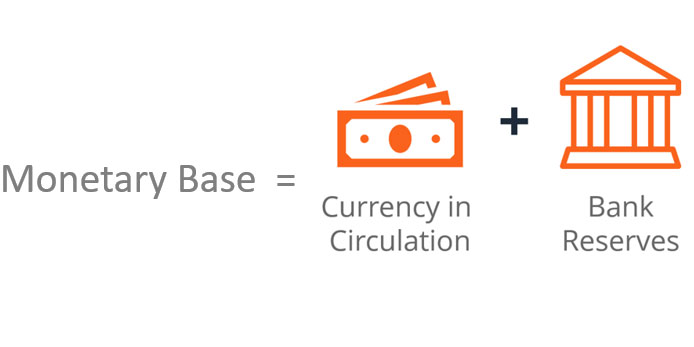REITs are popular in the global real estate financial market mainly because they have the following advantages compared with other real estate investment and financing methods:
First of all, the investment threshold is lower and the return is higher.REITs are usually financed through the issuance of trust products by trust companies, and ordinary investors can subscribe to REITs regardless of the number of funds. Compared with investment methods such as stocks and futures, REITs have lower risks, and their yields are usually much higher than bank deposit rates over the same period.
Second, the financing method is efficient and convenient, which broadens the sources of funds for commercial real estate.In the bank financing model, real estate developers generally apply for bank loans through their own credit or the provision of guarantees. Banks are more cautious in granting commercial real estate loans, the conditions are more stringent, the approval procedures are complicated and time-consuming, and they are often subject to the control and influence of national macro-control policies and regulatory authorities.
REITs finance through the issuance of trust products by trust companies. Commercial real estate can use the project's own advantages to attract funds. The investment behavior of the majority of investors is active and proactive. On the premise that the expected income and the safety of funds can be relatively effectively guaranteed, a large number of funds can be raised in a short period of time. For developers, not only is it quick to raise funds, but the hidden benefits are usually greater than bank loans with demanding conditions, strict approvals, and short loan cycles.
Finally, the safety of funds is guaranteed and the investment risk is low.REITs usually involve multiple parties such as real estate developers, trust companies, banks, etc., which can ensure the safety of funds through more reasonable institutional arrangements. As the trustor and beneficiary, trust companies can effectively supervise the use of funds by real estate developers at any time in accordance with the provisions of the trust law. REITs funds are essentially trust property and are independent of other assets of real estate developers. Real estate developers must use it for trust purposes in a reasonable and cautious manner, which is the safest guarantee for REITs to distinguish other financing methods.

Main REITs operating mode
REITs originated in the United States in the 1960s, and then gradually expanded to Europe, Australia, Japan, South Korea, Singapore, and other countries and regions, becoming a keen investment tool of various countries. It is of great significance in broadening investment channels, activating the real estate market, cultivating and improving the capital market, and promoting social development.
Due to the differences in the legal systems, economic development levels, and legal traditions of various countries (regions), the selection of REITs modes is also very different in various countries (regions), mainly as follows:
The REITs mode of non-specialized legislation in the United States
1. REITs make the general public become real estate investors
Before the 1960s, only companies and wealthy individuals were able to invest in major real estate projects such as shopping malls, industrial parks, and medical facilities. In order to change this situation, the US Congress passed the "The Real Estate Investment Trust Act of 1960”. Economic incentives have led investors to pool their resources to form companies that invest in major real estate assets, providing ordinary Americans with the same opportunities as elites. Three years later, the first real estate investment trust fund was established. Due to the incomplete supporting laws and regulations, REITs developed slowly in the United States. In 1986, the US Congress passed the Tax Reform Act of 1986, which not only gave REITs tax incentives, but also expanded their business scope. This greatly stimulated the enthusiasm of investors, and REITs began to flourish.

2. The REITs operating mode of non-specialized legislation driven by tax policy
Taxation is the biggest driving force for the development of American REITs. The Tax Reform Act of 1986 eased many restrictions on real estate investment trusts, and REITs were allowed to manage real estate investments on their own. "This change is of great significance, because imaginative and efficient real estate managers are a key factor in becoming profitable and successful real estate owners."
According to the provisions of the US Internal Revenue Code, REITs can be operated in three forms: companies, trusts, or associations. The following conditions should be met: (1) managed by one or more trustees or directors; (2) all their rights and interests are embodied by transferable shares, title certificates or, beneficiary certificates; (3) must be an independent subject with tax qualification registered in the United States; (4) it cannot be any form of financial institution (such as banks, mutual savings banks, cooperative banks, domestic construction, and trust associations, and other savings institutions) or insurance companies; (5) must be composed of more than 100 beneficial subjects (shareholders); (6) in the last half of each tax year, the share of 5 or fewer people cannot exceed 50% of all shares; (7) REITs shall meet the requirements of items 1-4 throughout the tax year, item 5 shall be met within at least 335 days, and item 6 shall be met throughout the second half of the year. However, in the first year of establishment of REITs, it is not necessary to meet the requirements of items 5 and 6.

In 1992, Taubman Centers in the United States issued a new type of real estate investment trust for the first time, namely umbrella partnership REIT-UpREITs. The biggest feature of UpREITs is that real estate trust investors do not need to directly own real estate, because if a real estate transaction occurs, they will pay a large amount of asset income tax. Instead, they exercise UpREIT's control rights to indirectly own real estate through a limited partnership. According to UpREIT's institutional arrangements, investors actually enjoy the same rights as shareholders of corporate real estate trusts without having to pay huge asset income taxes.
Later, DownREIT was derived on the basis of UpREIT. DownREIT requires that the trust forming this structure must be a listed company, and the manager in the partnership must not act as a limited partner. The operating status of UpREIT is completely dependent on the operating level of the partnership, while DownREIT is a joint organization of trust and the owner’s property. The performance of the partnership does not directly reflect the status of the real estate investment trust. UpREIT and DownREIT have been widely adopted due to their institutional advantages. In addition, the REITs market has been greatly developed due to the passage of the bill by the US Congress in 1993 allowing pension funds to invest in REITs and other favorable factors.

3. Flexibility and liquidity enliven the REITs market
Because there is no specific legislation and regulations in the United States, REITs are very flexible in form. There are both contractual and corporate types. Also, because of tax incentives such as capital gains tax, corporate-type organizational behaviors are widely adopted, and they show their obvious transitional characteristics.
American REITs have strong liquidity. Investors enter the REITs market by subscribing to real estate investment trust products. REITs exchange property assets through the issuance of UpREIT or DownREIT equity. The property transferor converts the equity into listed REITs shares and cashes out. REITs are publicly traded. The stocks and bonds of the company are equally part of the capital market. However, the business scope of REITs investment objects is specific real estate operation and management, and investors can freely enter or exit REITs, which is one of the main factors for the rapid development of REITs.

REITs mode of special legislation in Japan, Singapore, and other Asian countries (regions)
1. Introduce REITs into special legislation
In November 2000, Japan amended the "Investment Trust Law" to allow investment trust funds to enter the real estate industry. In March 2001, the Tokyo Stock Exchange (TSE) established a REITs listing system. In November of the same year, two REITs (J-REITs) were listed on TSE. As of September 10, 2009, the number of Japanese REITs listed has reached 41. In May 1999, The Monetary Authority of Singapore issued the Guidelines for Property Funds in Singapore. Singapore's Securities and Futures Act 2001 made special provisions on the listing and trading of REITs.
2. The REITs mode is relatively simple
The development of American REITs is driven by taxation policies, and there is no specific legislation to regulate REITs, so there are multiple REITs modes in the United States. REITs in Asian countries (regions) must make institutional choices for their operating modes due to specific legislation, and their operating modes are mainly contractual and company-based.
There are three forms of J-REITs in Japan: direct contractual REITs, indirect contractual REITs, and corporate REITs; the former two use beneficiary certificates, and the latter use investment certificates. All three can be listed and traded on the Tokyo Stock Exchange (TSE). Real estate investment trusts listed and traded in Japan are all corporate. Singapore allows REITs to be issued through trusts or companies.

Contractual REITs generally have the following parties: promoters, investors, managers, asset managers, and management consulting companies. Promoters are parties who apply to the competent authority for the establishment of REITs and are responsible for raising funds for REITs. The promoter should first subscribe for a portion of the REITs and bear the obligation to bear the liability for defects in the REITs subscribed by investors. Investors are the parties who subscribe for shares of REITs, and they are in the position of trustee and beneficiary together with the promoters in the trust relationship.
The manager is the trustee in the trust relationship of REITs, holding REITs assets in his own name and managing, using, and disposing of them for the benefit of investors and promoters. Asset managers are usually held by banks, financial companies, etc., responsible for the custody of REITs assets and fund transactions and settlements, and supervise the use of REITs assets by managers. Management consulting companies are usually professional companies that provide real estate investment consulting services, and provide investment decision-making opinions for the rational use of REITs. Corporate REITs include initiators, investors, REITs companies, trust managers, asset management companies, and management consulting companies.
Promoters raise and set up companies in accordance with the provisions of the Company Law, investors subscribe for shares of the company, and the two together become shareholders of REITs. As the trustor and the beneficiary, the company transfers the trust property to the administrator, who is responsible for management and disposal. In corporate REITs, investors are in the status of shareholders, and they exercise shareholder rights and assume shareholder obligations in accordance with the provisions of the company law and the company's articles of association, and cannot directly enjoy the rights of trust beneficiaries based on trust documents.

3. The regulation of REITs has developed from strict to loose
At first, Asian countries (regions) generally held a cautious attitude towards REITs, and REITs must follow strict procedures and rules from the establishment to operation. This limits the development of REITs to a certain extent. Recently, with the gradual maturity of the REITs market and the consideration of stimulating markets that have been hit by the financial crisis, Asian countries (regions) have shown an increasingly looser regulation of REITs.
One is the gradual increase in tax incentives. In the first few years when Japan launched REITs, the development of REITs was slow due to the downturn in the real estate market and people's lack of awareness of REITs. Until the beginning of 2007, with the modification and improvement of the J-REITs tax system, REIT investors enjoyed greater tax incentives and stable investment returns, and the J-REITs market began to develop rapidly. Similar to Japan, Singapore, and other Asian countries (regions) have successively lowered the tax rates of REITs products.
The second is to allow REITs to invest overseas. Since the end of 2007, affected by the subprime mortgage crisis in the United States, the number of IPOs and market value of J-REITs in Japan have fallen sharply. In May 2008, the Tokyo Stock Exchange (TSE) issued new regulations allowing J-REITs to invest in overseas real estate. The purpose of this is just as the REIT analyst, Merrill Lynch in Tokyo, believes: "This is not necessarily to promote cross-border investment. The Ministry of Land, Infrastructure, Transport and Tourism hopes to make the framework of J-REITs as close to international standards as possible from a long-term perspective."



